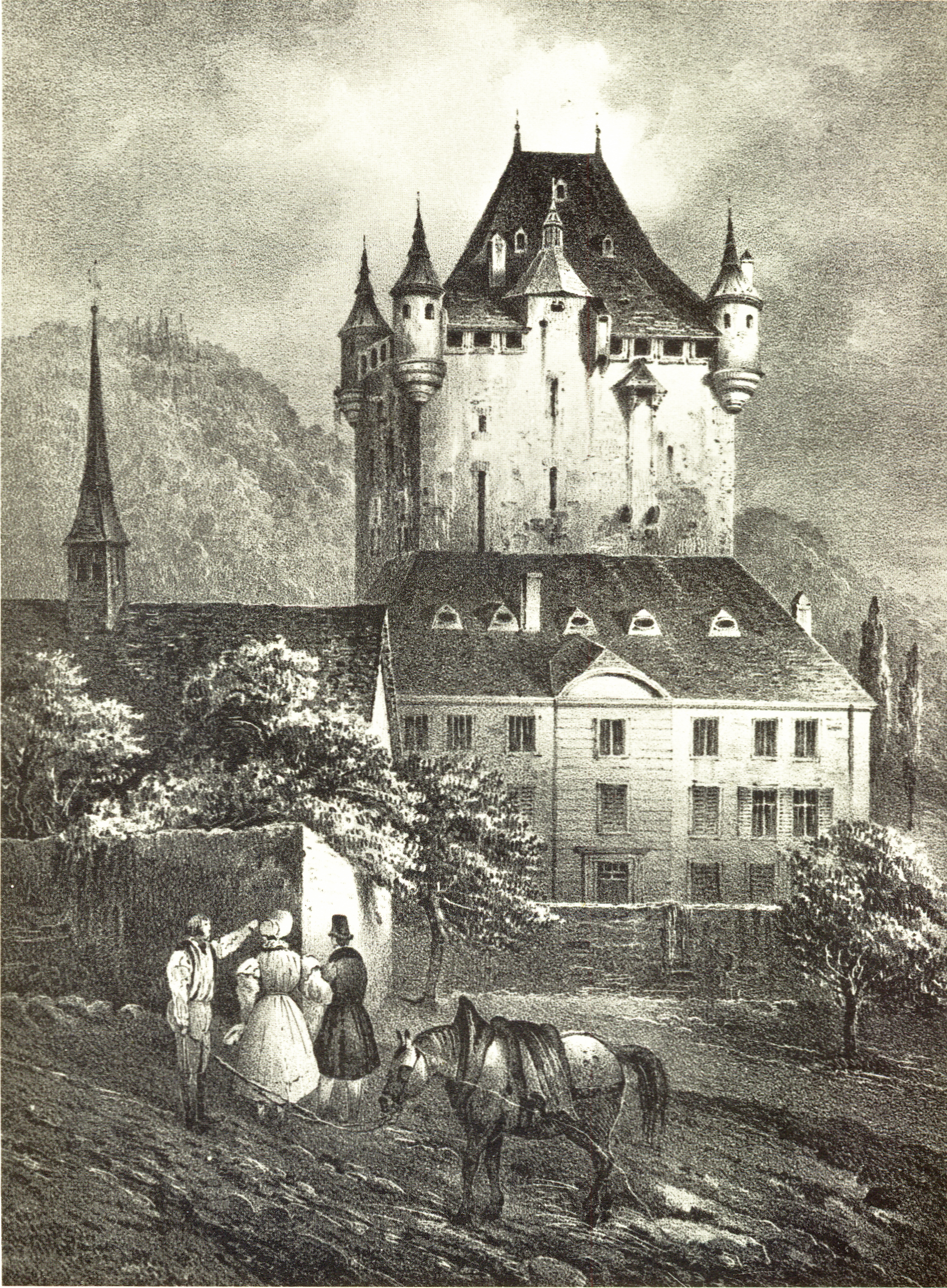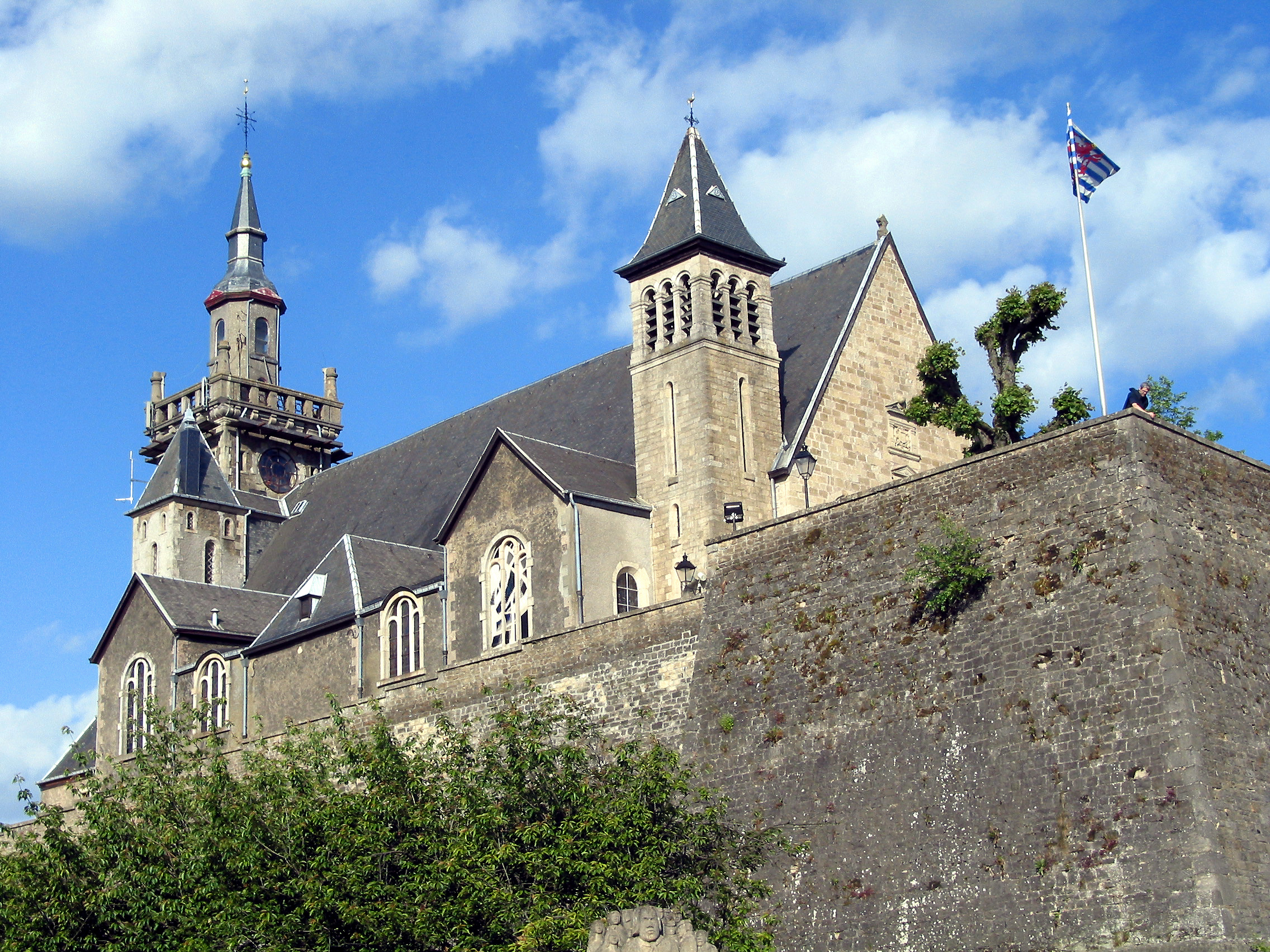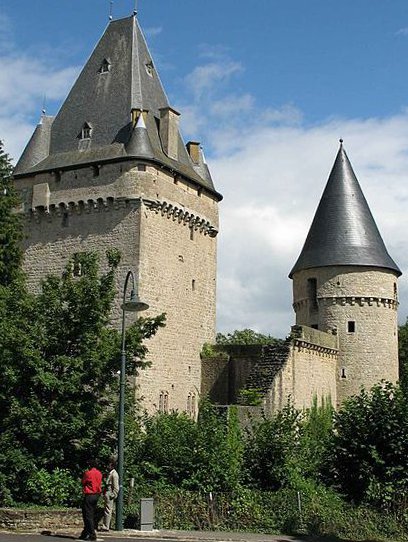|
Valley Of The Seven Castles
The Valley of the Seven Castles () is an informal name given to the Äischdall, the valley of the Eisch river, in central Luxembourg. The valley stretches from the confluence with the Alzette upstream to Steinfort, on the border with Belgium. The entire route can be traversed in about an hour by car, starting near the town of Arlon on the Belgian/Luxembourg border. There is also a 37-kilometre footpath that takes hikers along the valley and past the castles. It is named after the group of seven castles that line its route. Those seven castles are (in order, heading upstream): * Mersch * Schoenfels * Hollenfels * Ansembourg Castle * New Castle of Ansembourg * Septfontaines * Koerich Castle Koerich Castle (french: Château de Koerich) is a ruin located in the village of Koerich in central Luxembourg. With a history dating back to the 12th century, it is one of the castles in the Valley of the Seven Castles. Location Standing on lev ... File:Mersch castle 1.jpg, Mersch Castle ... [...More Info...] [...Related Items...] OR: [Wikipedia] [Google] [Baidu] |
Eisch
The Eisch () is a river flowing through Belgium and Luxembourg, joining the Alzette on its left in Mersch. It flows through the towns of Eischen, Hobscheid, Septfontaines, and Marienthal. It has several sources near the villages of Sélange (Belgium) and Clemency (Luxembourg). The Luxembourgish part of the Eisch is informally known as the 'Valley of the Seven Castles The Valley of the Seven Castles () is an informal name given to the Äischdall, the valley of the Eisch river, in central Luxembourg. The valley stretches from the confluence with the Alzette upstream to Steinfort, on the border with Belgium. Th ...', for the seven castles that line its route. International rivers of Europe Belgium–Luxembourg border Rivers of the Ardennes (Belgium) Rivers of the Ardennes (Luxembourg) Rivers of Luxembourg Rivers of Belgium Rivers of Luxembourg (Belgium) Rivers of Mersch {{Belgium-river-stub ... [...More Info...] [...Related Items...] OR: [Wikipedia] [Google] [Baidu] |
Luxembourg
Luxembourg ( ; lb, Lëtzebuerg ; french: link=no, Luxembourg; german: link=no, Luxemburg), officially the Grand Duchy of Luxembourg, ; french: link=no, Grand-Duché de Luxembourg ; german: link=no, Großherzogtum Luxemburg is a small landlocked country in Western Europe. It borders Belgium to the west and north, Germany to the east, and France to the south. Its capital and most populous city, Luxembourg, is one of the four institutional seats of the European Union (together with Brussels, Frankfurt, and Strasbourg) and the seat of several EU institutions, notably the Court of Justice of the European Union, the highest judicial authority. Luxembourg's culture, people, and languages are highly intertwined with its French and German neighbors; while Luxembourgish is legally the only national language of the Luxembourgish people, French and German are also used in administrative and judicial matters and all three are considered administrative languages of the cou ... [...More Info...] [...Related Items...] OR: [Wikipedia] [Google] [Baidu] |
Alzette
The Alzette (; ; ) is a river with a length of in France and Luxembourg. It is a right tributary of the Sauer (a tributary to the Moselle), and ultimately to the Rhine. It rises in Thil near the town Villerupt in the Meurthe-et-Moselle ''département'', France. It crosses the border with Luxembourg after . At Lameschmillen (near Bergem) it is joined by the Mess. It flows through the Luxembourgish towns Esch-sur-Alzette, Luxembourg City and Mersch, and empties into the Sauer near Ettelbruck. The rocky cliffs above the Alzette in Luxembourg are called 'Bock'. This name was given to the Casemates du Bock; a honeycomb of tunnels colloquially named 'Paula', which runs under the ruins of the Fortress of Luxembourg. It protected Luxembourg City Luxembourg ( lb, Lëtzebuerg; french: Luxembourg; german: Luxemburg), also known as Luxembourg City ( lb, Stad Lëtzebuerg, link=no or ; french: Ville de Luxembourg, link=no; german: Stadt Luxemburg, link=no or ), is the capital city of ... [...More Info...] [...Related Items...] OR: [Wikipedia] [Google] [Baidu] |
Steinfort
Steinfort ( ) is a commune and town in western Luxembourg. It is part of the canton of Capellen. , the town of Steinfort, which lies in the north of the commune, has a population of 2,184. Other towns within the commune include Hagen, Kleinbettingen and Grass. Transport Road Steinfort lies at the Belgian/Luxembourg border on the Route d'Arlon (N6), the original road linking Luxembourg City to Arlon. Rail Steinfort was served by the Prince Henri Railway that ran from Pétange to Ettelbruck in the north of the country. Despite the line's closure in 1967, the rails were never lifted and old rail infrastructure is still visible through Steinfort, where it crosses Route D'Arlon at a level crossing. Nearest railway stations: * Kleinbettingen railway station Population Notable Inhabitants * Jean Asselborn Jean Asselborn (; born 27 April 1949) is a Luxembourgish politician who has served in the government of Luxembourg as Minister for Foreign Affairs since 2004. He also ser ... [...More Info...] [...Related Items...] OR: [Wikipedia] [Google] [Baidu] |
Belgium
Belgium, ; french: Belgique ; german: Belgien officially the Kingdom of Belgium, is a country in Northwestern Europe. The country is bordered by the Netherlands to the north, Germany to the east, Luxembourg to the southeast, France to the southwest, and the North Sea to the northwest. It covers an area of and has a population of more than 11.5 million, making it the 22nd most densely populated country in the world and the 6th most densely populated country in Europe, with a density of . Belgium is part of an area known as the Low Countries, historically a somewhat larger region than the Benelux group of states, as it also included parts of northern France. The capital and largest city is Brussels; other major cities are Antwerp, Ghent, Charleroi, Liège, Bruges, Namur, and Leuven. Belgium is a sovereign state and a federal constitutional monarchy with a parliamentary system. Its institutional organization is complex and is structured on both regional ... [...More Info...] [...Related Items...] OR: [Wikipedia] [Google] [Baidu] |
Arlon
Arlon (; lb, Arel ; nl, Aarlen ; german: Arel ; wa, Årlon; la, Orolaunum) is a city and municipality of Wallonia located in and capital of the province of Luxembourg in the Ardennes, Belgium. With a population of just over 28,000, it is the smallest provincial capital in Belgium. Arlon is also the capital of its cultural region: the Arelerland (Land of Arlon in Luxemburgish). The municipality consists of the following districts: Arlon, Autelbas, Barnich, Bonnert, Guirsch, Heinsch, and Toernich. Other population centers include: * Autelhaut * Clairefontaine * Fouches * Frassem * Freylange * Hachy * Heckbous * Rosenberg * Sampont * Schoppach * Sesselich * Seymerich * Stehnen * Sterpenich * Stockem * Udange * Viville * Waltzing * Weyler * Wolberg History Roman and medieval times Before the Roman conquests of Gaul, the territory of Arlon and a vast area to the southeast were settled by the Treveri, a Celtic tribe. The local population adapted relatively easily ... [...More Info...] [...Related Items...] OR: [Wikipedia] [Google] [Baidu] |
Mersch Castle
Mersch Castle (french: Château de Mersch) in central Luxembourg is one of the castles belonging to the Valley of the Seven Castles. Located in the centre of Mersch, its history goes back to the 13th century. Today the castle houses the administrative offices of the local commune."Le château de Mersch" ''Association des Châteaux luxembourgeois''. Retrieved 15 March 2010. History The castle was built in the 13th century by Theodoric, a knight in the service of Countess Ermesinde of Luxembourg. It was captured and burnt down by the Burgundians. In 1574, Paul von der Veltz t ...[...More Info...] [...Related Items...] OR: [Wikipedia] [Google] [Baidu] |
Schoenfels Castle
Schoenfels Castle (Luxembourgish: ''Schlass Schëndels''; french: Château de Schoenfels), with a history dating back to the 12th century, is one of the castles belonging to the Valley of the Seven Castles in central Luxembourg. Located in the village of Schoenfels in the Mamer (river), Mamer Valley between Kopstal and Mersch, it now belongs to the State of Luxembourg."Château de Schoenfels" ''Association des Châteaux luxembourgeois''. Retrieved 14 March 2010. History Early history  The castle appears to have been built by Fri ...
The castle appears to have been built by Fri ...
[...More Info...] [...Related Items...] OR: [Wikipedia] [Google] [Baidu] |
Hollenfels Castle
Hollenfels Castle (french: Château de Hollenfels), with a history dating back to the 11th century, is one of the castles located close to the Eisch, River Eisch in the Valley of the Seven Castles in central Luxembourg. Today it is used as a centre for activities for young people, including a nearby youth hostel. Location Located at the southern end of the village of Hollenfels, the castle stands high above the River Eisch. A path with steep steps and wooden bridges leads to the foot of the castle where hollows in the rock can be seen, explaining the origin of the castle's name which literally means "hollow cliff". Indeed, there are several tunnels running through the cliffs below the castle. Access to the castle is by means of a brick bridge over the defensive ditch. History The first mention of Hollenfels was in 1129 when Ludolf, Lord of Hollenfels, was given the water rights of the abbey of Marienthal, Luxembourg, Marienthal which lies just 400 metres away. The majestic tow ... [...More Info...] [...Related Items...] OR: [Wikipedia] [Google] [Baidu] |
Ansembourg Castle
Ansembourg Old Castle ( lb, Buerg Aansebuerg , french: Vieux Château d'Ansembourg, german: Burg Ansemburg), known as the Old Castle of Ansembourg, in central Luxembourg is one of the castles belonging to the Valley of the Seven Castles. Located high above the little village of Ansembourg, the medieval castle is the private residence of the current Count and Countess of Ansembourg. History The property is first mentioned in 1135 when the lord of the castle was Hubert d'Ansembourg. The fortifications were probably built in the middle of the 12th century. At the beginning of the 14th century, the south-western tower gate and the northern keep appear to have been built by Jofroit d'Ansembourg. Since the times of Jakob II de Raville-Ansembourg, the castle does not appear to have been significantly altered. The main entrance bears the date of 1565. In 1683, the castle was damaged by the French troops of Marshal de Boufflers. In the 17th century, repairs were carried out by the Bidart ... [...More Info...] [...Related Items...] OR: [Wikipedia] [Google] [Baidu] |
New Castle Of Ansembourg
The New Castle of Ansembourg (french: Grand Château d'Ansembourg), in central Luxembourg is one of the castles belonging to the Valley of the Seven Castles. Located about one kilometre or just over half a mile below the Old Castle of Ansembourg, it was built by the industrialist Thomas Bidart in 1639."Jardin du grand château d'Ansembourg" ''Service des Sites et Monuments Nationaux''. Retrieved 15 March 2011. History In 1639, Thomas Bidart built the central part of today's castle as a comfortable house surrounded by walls and towers, two of which still stand. Originally from Liège in |
Septfontaines Castle
Septfontaines Castle (french: Château de Septfontaines, lb, Buerg vu Simmer) in central Luxembourg is one of the castles belonging to the Valley of the Seven Castles. Located high above the village of Septfontaines, the medieval castle is now privately owned."Château de Septfontaines" ''Fortresses, Châteaux, Manoirs''. Retrieved 16 March 2011. History It is not clear when the first castle was built in Septfontaines. In 1192, there is a reference to someone by the name of Tider who was Lord of Septfontaines. In 1233, Jean de Septfontaines placed the property under the protection of Countess Ermesinde of Luxem ...[...More Info...] [...Related Items...] OR: [Wikipedia] [Google] [Baidu] |



